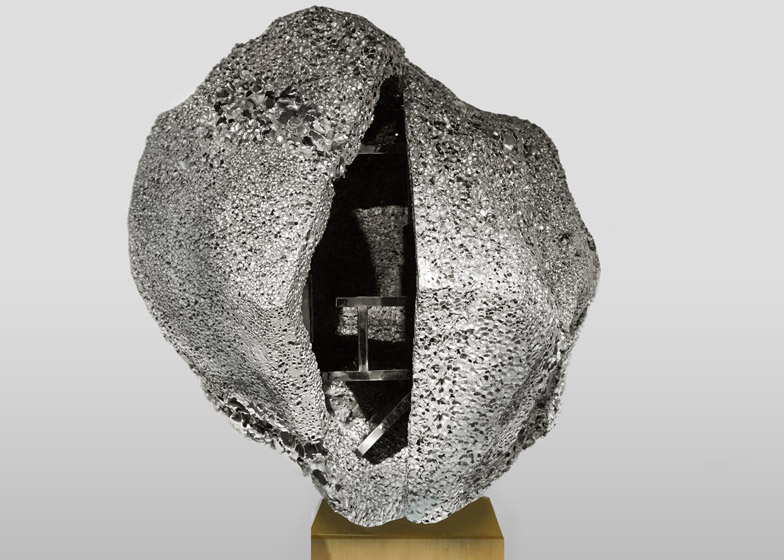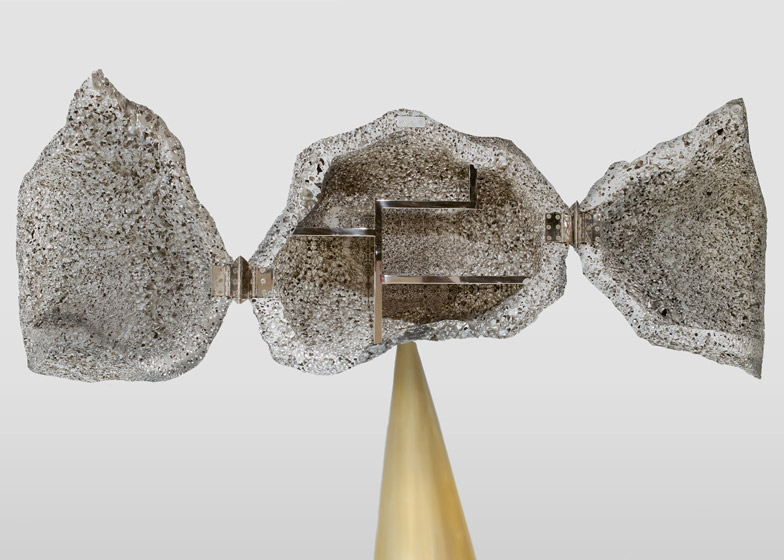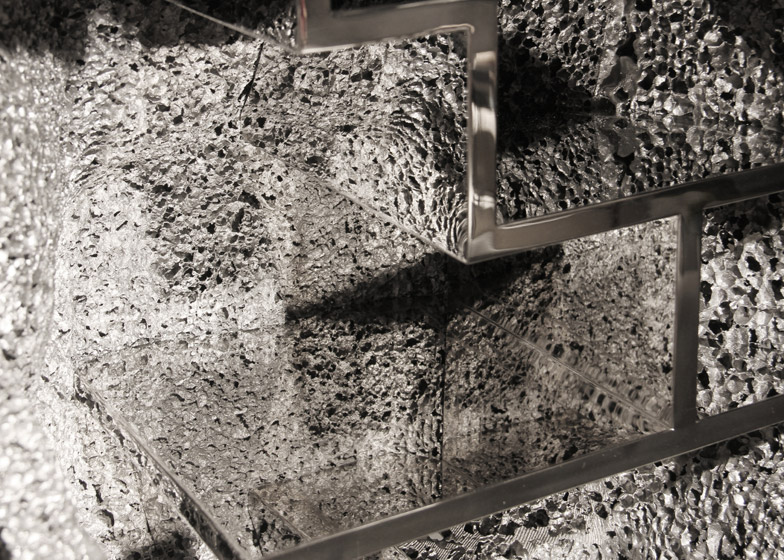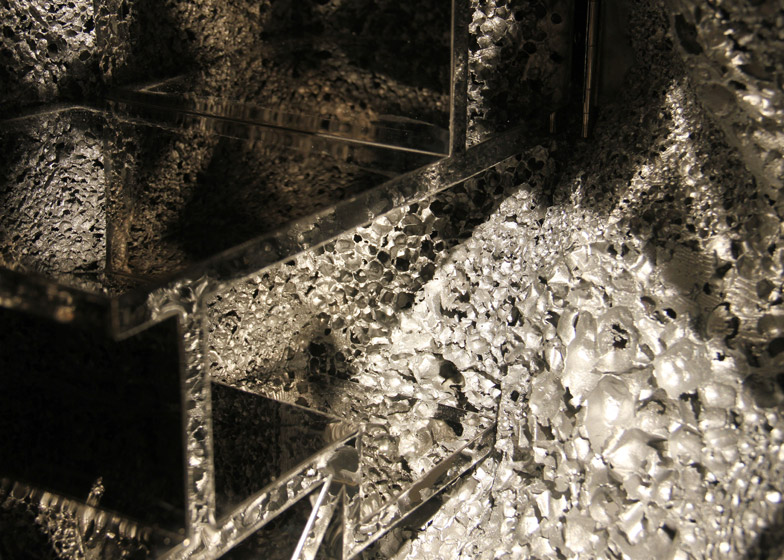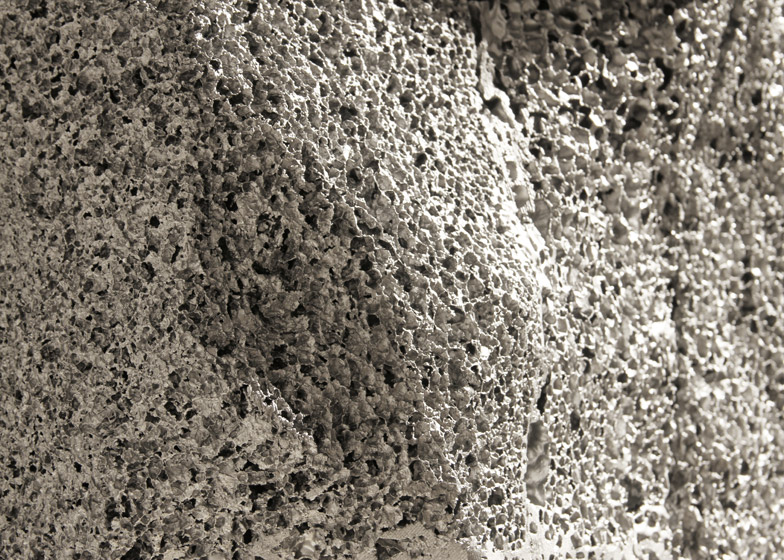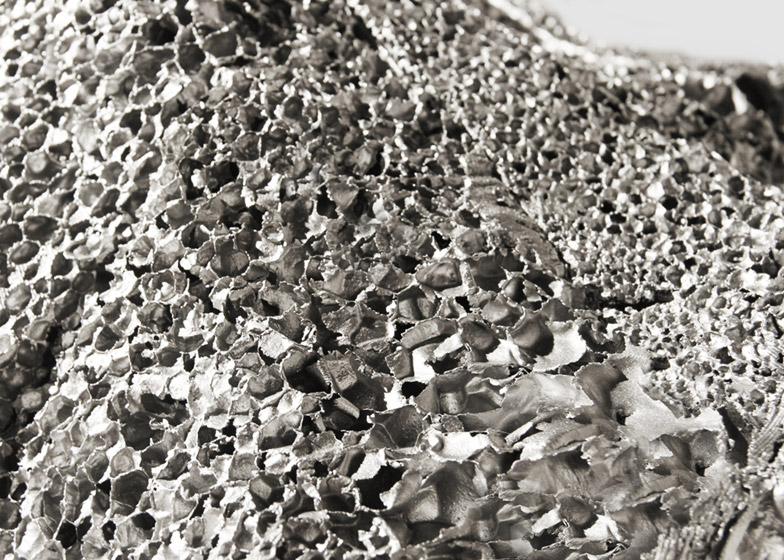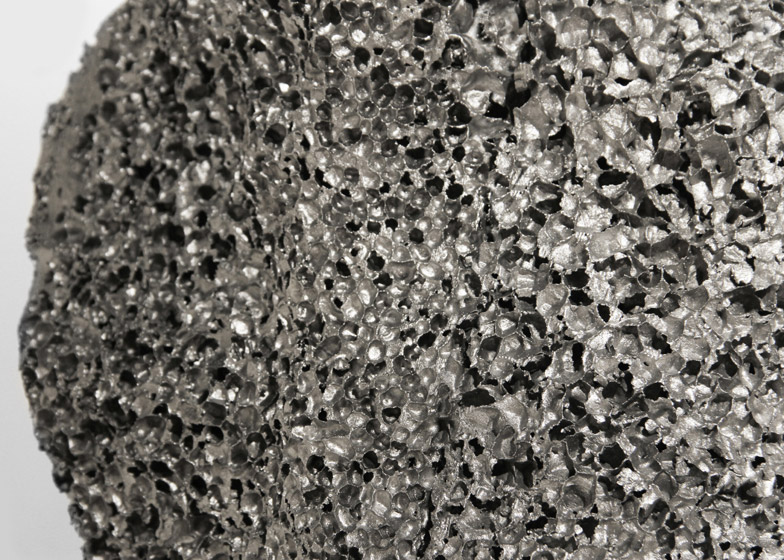Despite appearances, these "pumice-like" cabinets by London designers Studio Swine are made from aluminium foam rather than volcanic rock (+ slideshow).
Azusa Murakami and Alexander Groves of Studio Swine formed the Metallic Geology cabinets from aluminium foam, currently used predominantly as sound insulation in buildings and impact absorption in luxury cars.
"We chose to work with aluminium foam because of the beauty of the bubble formations - it really excites us when a industrial man-made material can mimic nature," Groves told Dezeen.
To create the cabinets, a gassing agent is injected into molten aluminium to create foamed aluminium - an incredibly lightweight material that is 90 per cent air and has the appearance of pumiced rock, formed in volcanoes. Computer numerically controlled (CNC) technology is then used to carve the material into shape.
"We wanted to display aluminium foam's aesthetic and material qualities," said Groves. "It's very efficient at creating volume with very little material and it can be endlessly recycled.
"According to many scientists and economists we could see the end of aluminium mining in the next decade with recycled material able to supply the needs of industry," he added.
One cabinet sits on a rectangular plinth and the other on the tip of a conical support, both of which are made out of stainless steel with titanium plating in gold.
The external forms of the cabinets reference Chinese scholars' rocks. Also known as scholar stones or viewing stones, these rocks are naturally occurring or shaped rocks prized for their awkward asymmetry, resonance when struck, resemblance to mountainous landscapes or figures, and textured or glossy surfaces. The stones are displayed on rosewood pedestals carved specifically for the purpose.
"We really like the appreciation of irregularity - the more awkward and unbalanced the rock appears the more highly it's valued," explained Groves. "We also like the appreciation of natural forms, the way the rocks are found on riverbeds eroded over thousands of years."
"In the aluminium foam, despite it being a very industrial material, there is a real irregularity in the formation of bubbles which gives the material a natural pumice-like appearance."
The sculptural forms open to reveal a fully-functional cabinet inside, the design of which references traditional Chinese tea cabinets.
"While we were in China, we really liked the small tea cabinets designed for displaying small highly decorative tea pots in irregular labyrinth-like shelving," Groves said.
"The rock shape seemed perfect to combine the two Chinese art forms. There is also a delightful surprise when a rock can open into a furniture piece."
By combining Chinese traditions with cutting-edge materials, Studio Swine hopes to drive interest in China's design and manufacturing capabilities. "The cabinets are a synthesis of ancient Chinese traditions and the country's contemporary industrial production," said Groves. "This combination of new Chinese industry and the culture's ancient traditions seemed to talk about the complexity of modern China.
"We hope they will encourage more interest in the potential of China to foster innovative design," he added. Metallic Geology cabinets were created for the Pearl Lam Galleries, which have spaces in Hong Kong, Shanghai and Singapore.
Previous projects from Studio Swine include an eyewear collection made from human hair and a machine that enables fishermen to collect plastic waste from the ocean and turn it into furniture.

